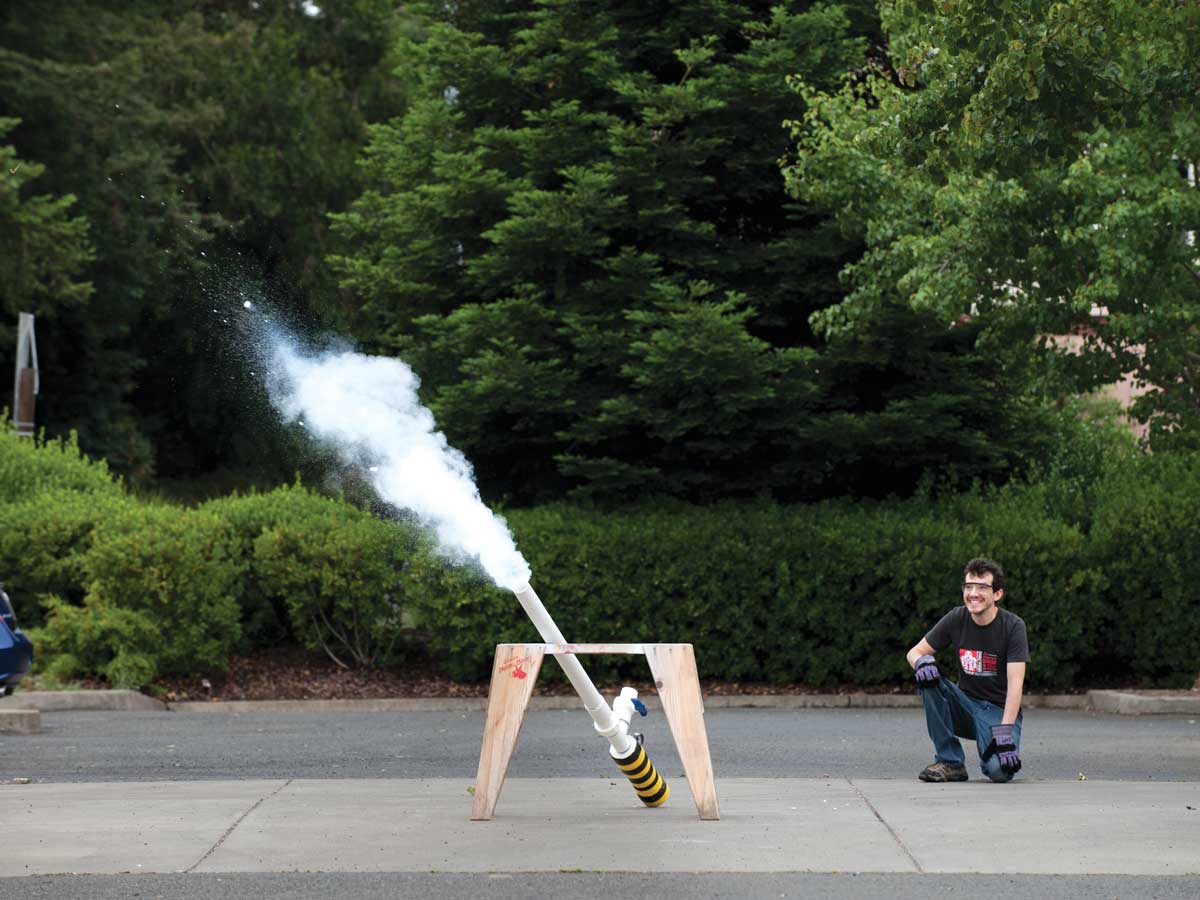
Is this project a bit dangerous? Sure. But with care and planning you can safely build a wicked-cool dry ice cannon that uses the power of sublimation to shoot a projectile high into the sky.
Frozen carbon dioxide is called “dry ice” because it doesn’t melt into liquid like normal ice. Water, as we all know, becomes solid ice below 32°F, exists as a liquid between 32°F and 212°F, and turns to steam at temperatures above that. Dry ice is different. There’s not enough pressure in our atmosphere for carbon dioxide to exist as a liquid. (On Venus, there are oceans of liquid CO2 because the atmospheric pressure is so high.) At an Earthly pressure of 14.7psi, dry ice never melts to a liquid state. Instead, at –109°F, it passes directly from a solid to a gas. That’s a physics phenomenon called sublimation.
It’s sublimation that makes this dry ice cannon shoot. As dry ice sublimates (or sublimes), the CO2 gas produced rapidly builds up pressure inside the cannon. To control the release of the pressure, we’ll install a burst valve that will suddenly but safely open when the pressure reaches a predetermined threshold.
Our burst valve is a disc of aluminum foil held in place between the 2 sections of a PVC pipe union and sealed tightly by the O-ring built into the union. When the pressure inside the cannon reaches about 25psi (far below the rupture strength of the PVC), the foil membrane bursts, the pressure escapes to the barrel, and whatever’s in the barrel is launched high into the air.
Dry Ice Safety Rules
- Do not store dry ice in an airtight container. The best place to store dry ice is in a styrofoam cooler with a loose-fitting lid.
- Do not touch dry ice with your bare skin; you could get frostbite. Always use insulated gloves or tongs.
- Open the windows in your car or workshop when you transport or experiment with dry ice. Breathing high concentrations of carbon
dioxide is hazardous and can be deadly. - Use only the amount of dry ice specified in the directions.

























